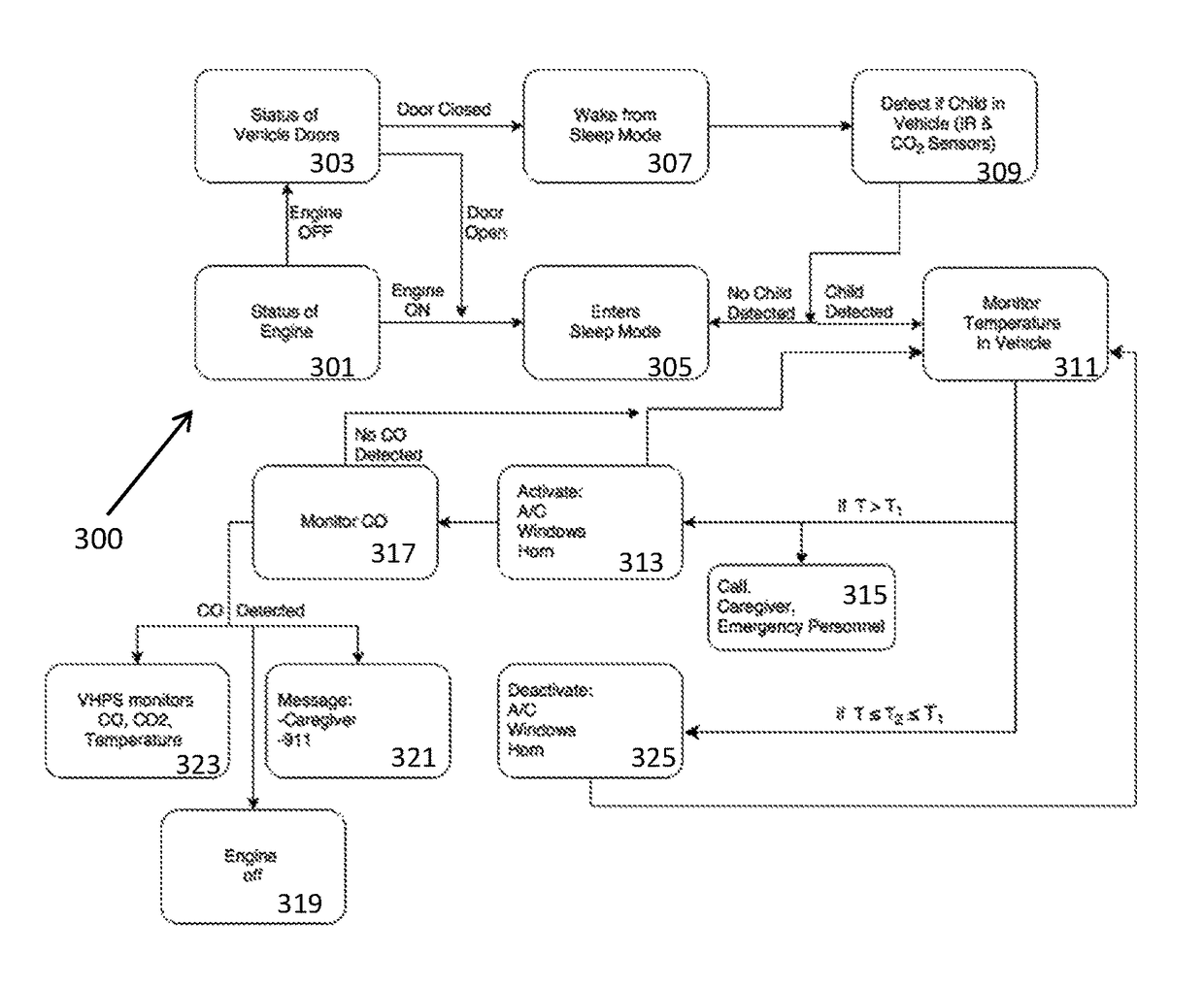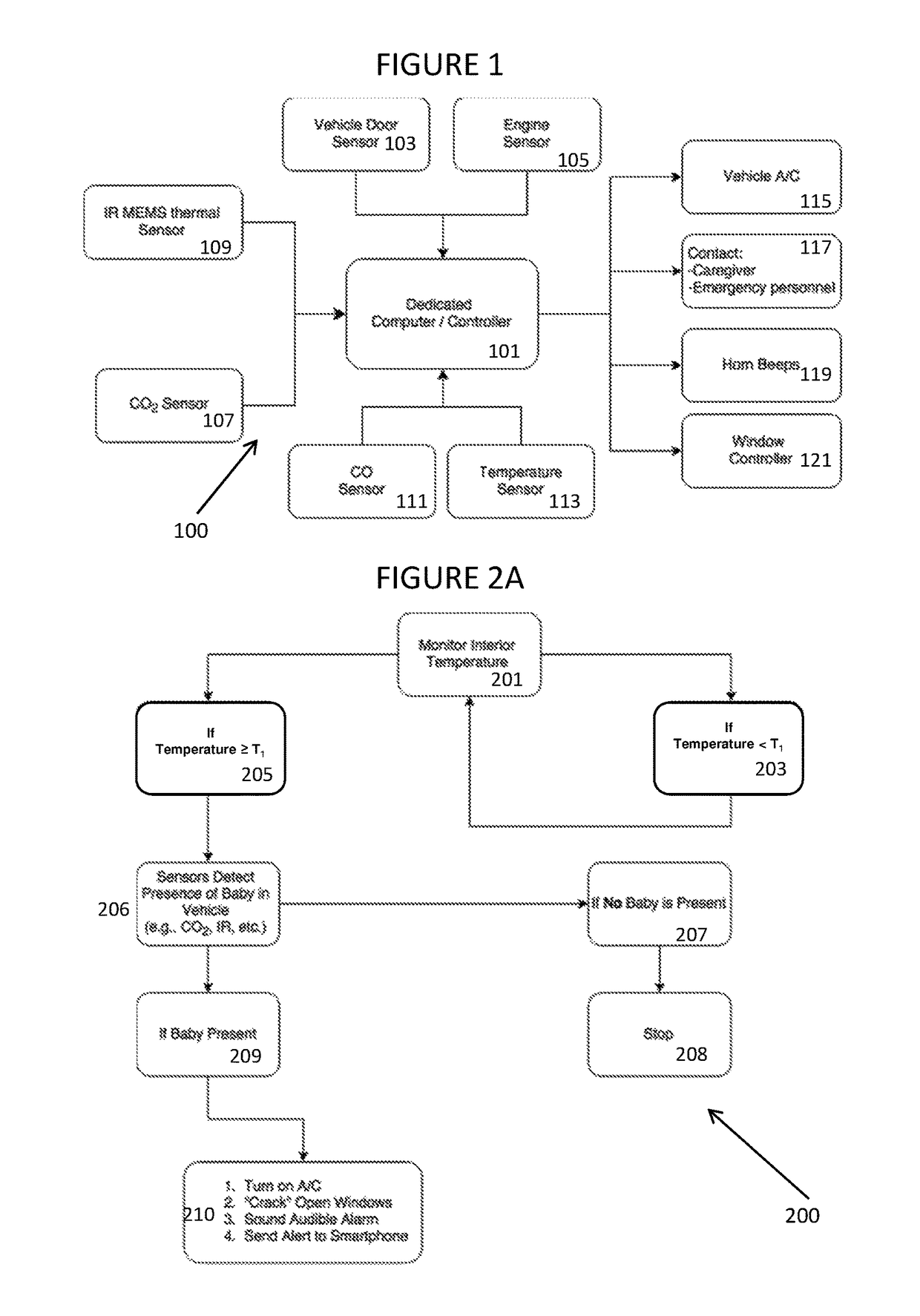Vehicular heatstroke prevention device
a technology for preventing heatstroke and vehicles, which is applied in vehicle heating/cooling devices, vehicle components, transportation and packaging, etc., can solve the problems of infants or young children being more at risk of hyperthermia, delirium, convulsions, death,
- Summary
- Abstract
- Description
- Claims
- Application Information
AI Technical Summary
Benefits of technology
Problems solved by technology
Method used
Image
Examples
Embodiment Construction
[0065]In the following description, various aspects of the present invention are described. For purposes of explanation, specific configurations and details are set forth in order to provide a thorough understanding of the present invention. However, it is apparent to one skilled in the art that the present invention may be practiced without the specific details presented herein. Furthermore, well known features may be omitted or simplified in order not to obscure the present invention.
[0066]In certain embodiments, the vehicular heatstroke prevention system described herein is passive, eliminating the need for human intervention. It is designed to detect the presence of a breathing person or animal, such as a child or pet, in the vehicle, monitor the interior vehicle temperature, and take corrective action to prevent the temperature from exceeding a preset value. Although reference is made in the discussion herein to a child in the vehicle, it should be understood that the discussio...
PUM
 Login to View More
Login to View More Abstract
Description
Claims
Application Information
 Login to View More
Login to View More - R&D
- Intellectual Property
- Life Sciences
- Materials
- Tech Scout
- Unparalleled Data Quality
- Higher Quality Content
- 60% Fewer Hallucinations
Browse by: Latest US Patents, China's latest patents, Technical Efficacy Thesaurus, Application Domain, Technology Topic, Popular Technical Reports.
© 2025 PatSnap. All rights reserved.Legal|Privacy policy|Modern Slavery Act Transparency Statement|Sitemap|About US| Contact US: help@patsnap.com



